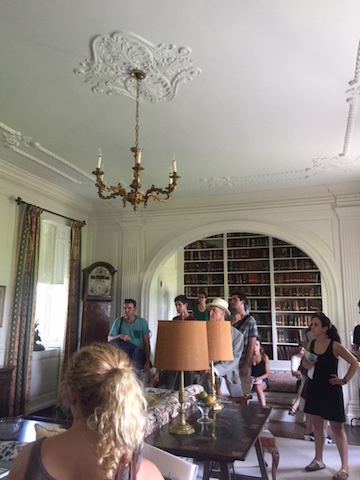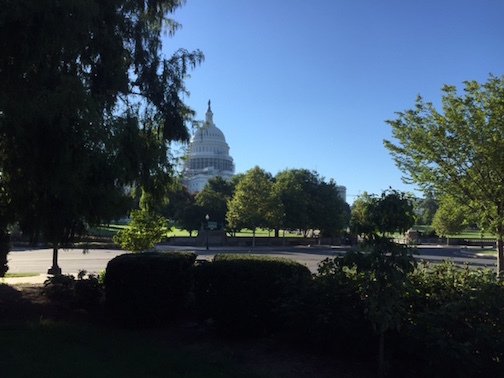As part of the Notre Dame School of Architecture curriculum, fourth-year students are encouraged to attend a field trip in August to Washington D.C. and its surroundings. This 10-day excursion begins in Williamsburg, Virginia and continues to Richmond and The University of Virginia campus in Charlottesville. The field trip ends in the nation’s capital, Washington D.C. Students also visit Monticello, various plantation houses, and Mount Vernon.

This opportunity is a wonderful way for students to apply their architectural knowledge accumulated in Rome to American architecture and urbanism. Additionally, this trip focuses on how America’s first architects and planners used European architectural precedent and modified it using the resources and land readily available. A new, American style of architecture was created, and students explore what makes this style unique.
During their design studio class, a 6-credit course taken every semester until graduation, students are assigned two projects over the course of the semester. The first project takes place in Washington D.C., in a trapezoidal plot of land in front of the Capital Building. The second project is set in Williamsburg, and students must integrate their designs into the urban fabric of the city and the campus of William and Mary. During the trip, students visit the actual project sites where they take photos, make diagrams, and physically experience the space.

Led by their design studio professors, students listen to lectures, take notes, make sketches and diagrams, and are given free time to explore the sites individually each day. Much like their field trips in Italy, students craft what is known as a “lexicon” of architectural details of various scale in order to understand the vernacular of a city or region. Sketches of windows and doors, street sections, proportional analyses, plan diagrams, and perspectival studies are just a few manners in which students can add to their architectural lexicons.
Practically, students also learn some of the structural methods early American architects used to adapt to the hot and humid climate of Virginia, which is much different than Europe. Window placement and design, building orientation, and air circulation techniques are studied extensively, which supplements other courses required during students’ fourth year of study.

Personally, my favorite part of the field trip was visiting the University of Virginia. We learned about Thomas Jefferson’s designs of the 10 unique pavilions on the lawn in front of the Rotunda. Although the pavilions look extremely similar upon first glance, each one is vastly different upon architectural analysis. I was particularly intrigued by the way most architectural decisions were apparently made during construction. It is a true testament to how much a design can change from theory to drawing and finally to the 3-dimensional product.
It was an incredible opportunity to be able to visit both of the sites firsthand and to learn about colonial architecture. I am excited for the semester to come!